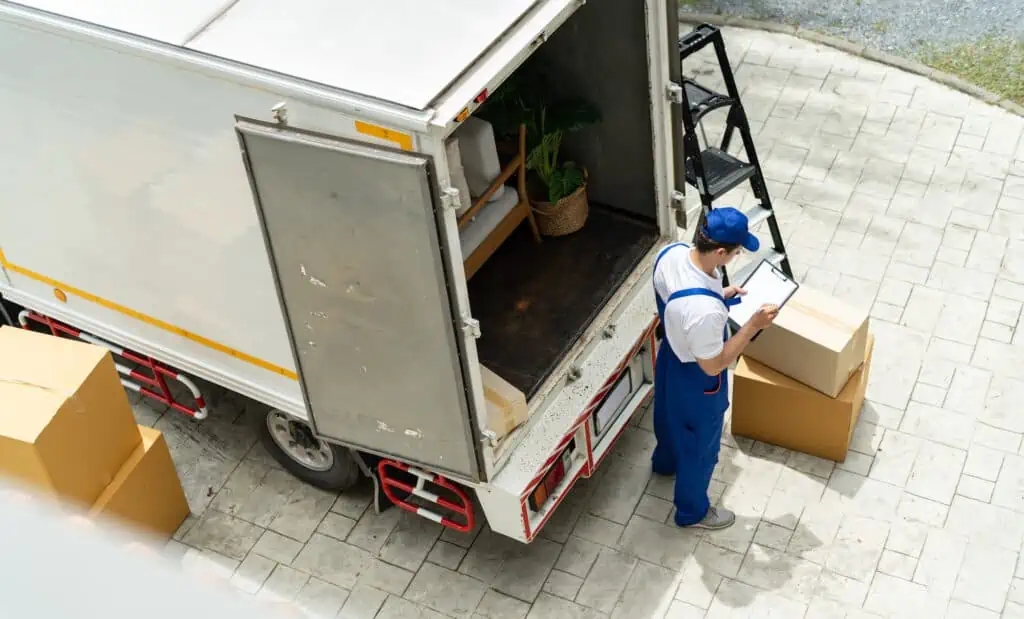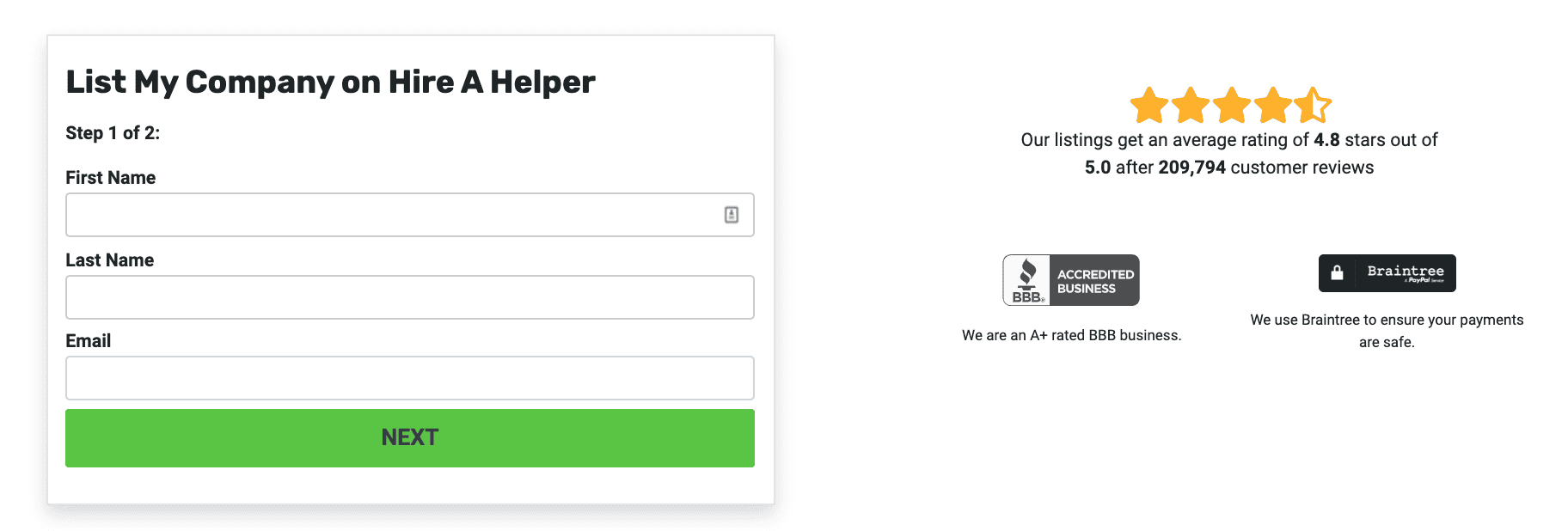Key Findings
- In 2023, a typical moving company earns between $90 and $150 per hour on average, or from $244 to $407 per move
- The average amount a moving labor company earned on HireAHelper in 2023 is $113 per hour
- Mover earnings in 2023 are highest in Birmingham, AL where average hourly earnings on a labor-only move reached $146
- Vermont is the state where movers earn the most on average in 2023 – $193 per hour
- The state with the greatest demand is Mississippi, with 434 moves per moving company registered in the state
- Killeen-Temple-Fort Hood, TX has 392 moves per moving company registered in the metro, the most favorable demand ratio in the country
When we released our last study of starting a moving labor company as a side hustle, it was a great time to get into the business. Home sales were at an all-time high, and the number of Americans who moved that year inched up for the first time in a decade.
However, after only one year, the housing market has cooled off. And even though sales of newly built homes are still up 6%, home sales as a whole aren’t as high as last year.
The cost of moving has also grown 4% in 2023 (ahead of inflation rates), and this is actually good news! It means movers’ earnings have most likely also increased. So if you’re interested in adding a side hustle to your income, starting a moving labor company is well worth considering.
What Is a Moving Labor Company, and Can It Work as a Side Hustle?
Most of us think of movers as people who pull up in their own truck, pack and load people’s possessions, drive them to the new location, and unload everything there. While that is true of some moving companies, it certainly does not represent all of them.
Full-service movers (as they’re called in the industry) do exist, but considering they tend to offer the whole service package, they also charge significantly more. (These are the huge van line companies.) As most people are keen to spend as little as possible on moving, “moving labor” companies have become increasingly common.
Moving labor companies are often responsible for loading, unloading, and, sometimes (though rarely), packing up people’s possessions. And, because people who move tend to book their own container or moving truck to save money, no driving is involved!
Why is labor-only so profitable?
Sounds interesting? Here are a few more reasons why moving labor is a good choice for a side hustle.
- You don’t require a special mover’s license in most states
- No need to invest in your own truck or spend money on gas
- With almost half (48%) of all moves taking place on the weekend, you can keep this side hustle alongside your main job or your studies
- Despite being at their highest last year, moving costs (AKA your potential earnings) have increased again in 2023
First Move: Getting Started and Where To Find Customers
Much like with any business, you’re going to need to put some effort into setting up your moving labor company and attracting customers.
The first thing you’re going to need is another crew member, as two-person crews are industry standard!
That’s because helping people move becomes much faster and easier when it’s not just you lugging all the heavy items in and out of the truck. Based on our stats, over 80% of labor-only moves are carried out by teams of two people.
We’ve put together this handy table that compares typical avenues new moving labor companies can pursue on their way to establishing themselves in the industry.
| Platform | Pros | Cons |
| Craigslist | Most popular classified ads website with millions of visitors daily
Typical starting point for people looking for movers |
Costs money to post ads as a business
Customers can be flakey, often looking to pay as little as possible, and can end up being very hard to service |
| Yelp | Popular with people looking for local businesses
Business owner tools let you upload logo/team photos to boost credibility |
No actual online booking, you just get “leads”
You’ll have to deal with lots of messages, emails, and phone calls from people just looking for a quote |
| HireAHelper | Completely free to register, no membership fees or cancellation fees
Your very own landing page for customers to see your rates and availability Insurance and 7-day-a-week customer service for you and your customers |
A fee is charged per every order booked through the platform in exchange for the customer assistance and other benefits |
| Own website | Entirely up to you how to present your company, brand, and services
You keep all the money you earn, no fees or commission rates |
You need to create, design, and maintain the website
All the customer service, marketing, and insurance falls on you
|
If you’re serious about your side hustle or are considering getting into the moving industry fully, there’s nothing stopping you from pursuing multiple or all of the above options at once. There might also be other options or uniquely popular places/websites to find customers where you live.
Fast Facts About Moving Company Earnings in 2023
Here are some estimates on moving marketplace earnings.
Keep in mind that companies like HireAHelper will provide you with your own company profile, customer service, and claims coverage with no listing fees whatsoever. For jobs on sites like Yelp, you’re totally on your own — so factor the cost of breaking even a single item without someone to cover it for you into your calculations.
When do I need to be free?
If you’re a student or already have a job, you’re probably not going to jump into the moving industry as a full-time gig. And that’s exactly why being a mover is such a great job.
Almost half (48%) of all the moves booked via HireAHelper in 2023 took place on either Saturday or Sunday. So, if you’re free on a weekend, you can take on jobs when the demand for moving services peaks.
“…you should also remember how supply and demand of moving services will impact your future jobs. Demand where you live will determine how much you can charge for services and how easily you can grab a share of the market.”
How much revenue do movers make per hour?
In 2023, the average amount a moving labor company earned on HireAHelper is $113 per hour (after fees). That rate is based on the service of two movers loading and unloading a customer’s belongings and does not include potential tips.
According to Forbes, local movers usually charge between $50 to $250 per hour in 2023. Yelp’s most recent estimates have a midpoint of $147 per hour. ConsumerAffairs, on the other hand, puts the cost for a local move at $80 to $100 per hour, with the move executed by a team of two people.
Based on HireAHelper figures, a typical labor-only loading and unloading type move takes two hours and 45 minutes, which equates to $289 you and your partner can earn per move (or about $145 per person on a two mover job).
Let us assume that, as a newly founded moving company, you won’t be able to charge rates like that immediately. Even so, if you charge $250 per move, and can pick up four to five moves over the course of one weekend, you and your partner-in-moving can make $1250 total ($625 each). Not bad at all, in this economy!
Cities & States Where Movers Earn the Most
As is the case with almost any product or service, the price people are willing to pay for moving services varies depending on where in the country you are. Check out the map below.
Top Cities for Mover Profits
Based on moves booked via HireAHelper.com from January through September 2023, the city with the highest average earnings for movers is Birmingham, AL where hourly earnings for local moving labor companies averaged $146 per hour. Movers in Buffalo, NY and Boston, MA both made an average of over $140 per hour so far in 2023.
Other cities in the top 10 include two cities in Ohio — Cincinnati, OH ($135 per hour) and Dayton, OH ($131 per hour). Salt Lake City, UT ($129 per hour) and Milwaukee, WI ($128 per hour) round off the list.
Top States for Mover Profits
Those are the top cities, but what about the top states?
At the state level, the top three highest average hourly earnings are in Vermont ($193 per hour). West Virginia ($170 per hour) and Iowa ($162 per hour). It’s worth bearing in mind that these states aren’t the most populated, meaning the number of moves/market size wouldn’t figure to be especially large.
On the flip side, movers in states such as Nevada ($89 per hour), Texas ($96 per hour), and Arizona ($100 per hour) had comparatively lower average earnings. In contrast, these are the states with significantly higher moving activity and therefore have significantly more opportunities to enter the market.
The same can be said are other states with lower hourly earnings like Florida and Georgia (both $109 per hour), and North Carolina ($110 per hour).
See prices for local moving labor. Read real customer reviews. Easily book your help online.
Movers Wanted: States and Cities With Greatest Demand for Moving Services
It’s good to keep your eye on earnings, but you should also remember how supply and demand of moving services will impact your future jobs. Demand where you live will determine how much you can charge for services and how easily you can grab a share of the market.
To understand where the demand for moving services and their supply is most favorable, we looked at the number of people moving annually (the demand), and the number of companies in the moving industry (the supply) in each state and major metropolitan area.
Among metropolitan areas, Killeen-Temple-Fort Hood, TX stands out as having by far the highest number of moves per registered moving company — 392. Another Lone Star State metro, Lubbock, TX, is in 9th place with 177.
“Based on our stats, over 80% of labor-only moves are carried out by teams of two people.”
Charleston, WV is in second place with a ratio of 278 moves per moving company. And as mentioned earlier, West Virginia is also the state where mover earnings are among the highest in the country.
Two metros from Arizona, Yuma, AZ (252) and Prescott, AZ (240), make the top 10 with their favorable moving demand-to-supply ratio. One of the most populated metro areas, Dallas-Fort Worth-Arlington, TX ranks in the 12th spot with 168 moves per each locally registered moving company.
Looking at the size of opportunity in the moving services market at the state level, Mississippi (434) and Kansas (431) are clear winners with over 430 moves per moving company registered in each state.
Arizona (322), Arkansas (311), and New Jersey (306) are towards the top of the ranking, all with over 300 moves per moving company.
Convinced? Here Are Some Practical Steps to Get Moving
If you think you have what it takes to help people move, we have some resources for you.
First off, here’s a guide for starting up your own local moving labor company. Within, you’ll find all you need to know about how to register a business, pricing your services, finding customers, tools you need for your new side hustle job, and a lot more.
Have your own truck and want a license to do the driving part of the job as well? Here’s a guide for starting a full-service moving company, explaining all the steps for starting a moving business with links and references to the licensing authorities in each state.
Once you’ve got a handle on things, you can also list your company on HireAHelper to help you start getting those first customers.
Sign up here!








